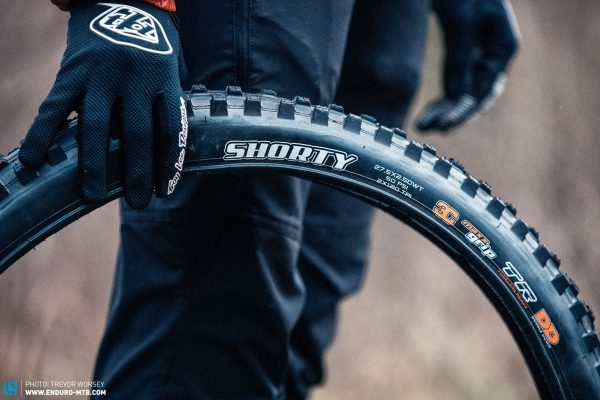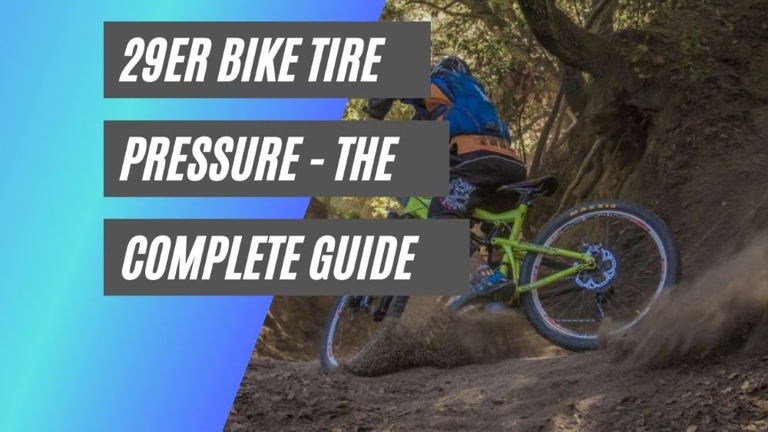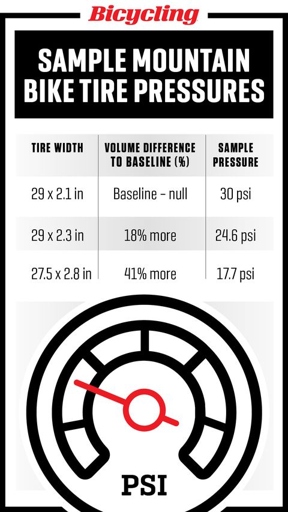29er tires have become increasingly popular in recent years as mountain bikers have discovered the benefits of the larger diameter. 29er tires offer a number of advantages over traditional 26″ tires, including increased traction and stability, as well as a smoother ride. However, with these benefits come a few challenges, one of which is finding the perfect tire pressure. In this article, we’ll take a look at how to find the perfect tire pressure for all conditions, whether you’re riding on hardpack, loose dirt, or even in the mud.
How To Adjust the Tire Pressure of 29ers For All Conditions
But with so many different conditions to account for, how do you know what tire pressure to run in each one? 29er tires are designed to provide optimal traction and stability in a variety of conditions, from hardpacked dirt to loose sand and everything in between.
The best way to figure out what works best for you is to experiment and find what works best in each individual condition. The answer, unfortunately, is that there is no definitive answer.

However, there are a few general tips that can help you get started. For hardpacked dirt, a good rule of thumb is to start with around 30 psi and adjust from there based on how the bike feels. For loose sand, you’ll want to start with a lower pressure, around 20 psi, and increase it if you find yourself sinking in too much.
A few psi can make a big difference in how your bike handles, so it’s always best to err on the side of caution. And finally, don’t forget to check your tire pressure before every ride, no matter what the conditions are.
29er Tire Pressure PSI – Mountain/trail bike – wet conditions
29er Tire Pressure PSI – Mountain/trail bike – wet conditions

In general, a wider tire will require less pressure than a narrower tire. For example, a 2.4″ tire may only need 20-30 PSI, while a 1.95″ tire may need 30-40 PSI. The correct tire pressure for your 29er mountain bike depends on many factors, such as terrain, rider weight, and tire width.
If the trails are wet, you may need to reduce the pressure slightly to prevent the tires from slipping. In addition, the conditions of the trail also play a role in how much pressure to use. Conversely, if the trails are dry and hard-packed, you may need to increase the pressure slightly for better traction.
As a general rule of thumb, start with the recommended pressure for your tires (usually printed on the sidewall) and adjust from there based on the conditions.
29er Tire Pressure PSI – Mountain/trail bike – dry conditions
29er Tire Pressure PSI – Mountain/trail bike – dry conditions
The correct tire pressure will depend on the type of terrain you are riding on, as well as the conditions. It is important to have the correct tire pressure for your 29er mountain bike.
For dry conditions, the recommended tire pressure is between 20 and 30 PSI. For loose or sandy conditions, you will want to lower the pressure to around 15 PSI. If you are riding on hardpacked trails, you can go up to 35 PSI.

If you are unsure about what tire pressure to use, it is always best to err on the side of caution and start with a lower pressure. You can always add more air if needed.
29er Tire Pressure PSI – Road bike – wet conditions
29er tires typically have a pressure range of 30 to 60 PSI. In general, lower pressure is better for traction and comfort, while higher pressure is better for rolling resistance and durability.

This will help the tires grip the road and avoid slipping. For wet conditions, it is generally best to err on the side of lower pressure. However, if the roads are very wet or icy, you may need to increase the pressure to avoid punctures.
29er Tire Pressure PSI – Road bike – dry conditions
If the tires feel slow or sluggish, increase the pressure by a few PSI. 29er tires typically have a pressure range of 30 to 60 PSI. If the tires feel squirmy or unstable, decrease the pressure. For road biking in dry conditions, it is best to start in the middle of that range and adjust as needed based on feel and tire performance. Experiment until you find the perfect pressure for your tires and conditions.
Why the PSI is lower for wet conditions and for a trail/mountain bike
Wet conditions and trail/mountain biking require less air pressure in the tires because the tires need to be able to grip the ground and provide traction. The PSI, or pounds per square inch, is a measure of how much air pressure is in a tire. The less air pressure there is in the tire, the more contact the tire has with the ground, which provides better grip and traction. The lower the PSI, the less air pressure there is in the tire.
How the air temperature affects the PSI of 29ers should be
In general, the colder the air temperature, the lower the PSI should be. The reason for this is that cold air is more dense than warm air, so it takes up less space. This means that the warm air will compress less easily, which will result in a higher PSI. The air temperature has a direct effect on the PSI of 29ers. This is because warm air is less dense than cold air, so it takes up more space. Conversely, the warmer the air temperature, the higher the PSI should be. This means that the cold air will compress more easily, which will result in a lower PSI.
Should You Inflate Bike Tires to the Max PSI
There are a few different factors that you need to take into account when inflating your bike tires, such as the type of tire, the terrain you will be riding on, and the weather conditions. Bike tires are one of the most important parts of your bike, and it is important to make sure they are inflated properly.
This will give you the best possible grip and traction on the road. It is generally recommended that you inflate your bike tires to the maximum PSI, which is usually around 60 PSI. However, there are a few exceptions to this rule.
This will help to prevent your tires from sinking into the ground and making it difficult to pedal. If you are going to be riding on soft terrain, such as sand or mud, you may want to reduce the pressure in your tires.
If you are riding in extremely cold weather, you may also want to reduce the pressure in your tires. This is because the cold can cause the air in your tires to expand, which can make your tires more likely to burst.

In general, it is best to inflate your bike tires to the maximum PSI unless you have a specific reason not to. This will help you to avoid any problems on the road and keep you safe while riding.
Sources
This guide will help you find the perfect pressure for all conditions, whether you’re riding on hard packed dirt, loose sand, or anything in between. It is important to have the correct tire pressure for your 29er mountain bike. There are a few different factors that go into finding the perfect pressure for your bike. The wrong pressure can lead to a flat tire, poor handling, and a less than ideal ride.
Frequently Asked Questions
1. What is the ideal tire pressure for a 29er mountain bike?
The ideal tire pressure for a 29er mountain bike varies depending on the conditions. For dry, hardpacked trails, you’ll want to run your tires at a lower pressure, around 20-25 PSI. For wet or loose conditions, you’ll want to increase your tire pressure to around 30-35 PSI.
2. How do I know if my tires are properly inflated?
You can check your tire pressure by using a tire pressure gauge. Simply attach the gauge to your tire valve and check the reading. If it’s lower than your desired pressure, use a hand pump or CO2 cartridge to add air to your tires.
3. What are the consequences of running my tires at too high or too low of pressure?
If you run your tires at too low of pressure, you risk pinch flats and damaged rims. If you run your tires at too high of pressure, you’ll decrease your traction and increase your risk of a blowout.
4. Can I adjust my tire pressure on the trail?
Yes, you can adjust your tire pressure on the trail if you have a hand pump or CO2 cartridge with you. However, it’s best to adjust your pressure before you head out so you don’t have to waste time on the trail.
5. What is the best way to store my mountain bike when I’m not using it?
The best way to store your mountain bike is in a cool, dry place. If you have to store it outside, make sure it’s covered and protected from the elements.
Final thoughts
29er tire pressure is an important aspect of mountain biking. The right pressure can help you maintain control and traction on all types of terrain. By following the guidelines in this article, you can ensure that your tires are always at the optimal pressure for the conditions you’re riding in.
